Advantages of Microsoft Azure IoT Platform for IoT Projects
Several weeks ago we have reviewed AWS IoT platform and tried to figure out why choosing this platform is beneficial for IoT projects. Today, we will cover one of its nose-to-nose competitors, Microsoft Azure IoT platform.
We will go through the basics of using this platform on IoT projects, describe its services and outline many Microsoft Azure benefits that make some of the biggest world corporations like ExxonMobil use it to optimize their operations and encourage AT&T to build the future of 5G mobile and 5G IoT development together with Azure Cloud.
Here’s what we’ll go through:
- Azure IoT general overview
- The services and features the platform offers
- Microsoft Azure benefits for IoT development
- Real examples from the companies you know
By the way, are you currently starting or working on an IoT project? If yes, you might need skilled IoT app development company to help you implement it. Contact us to talk about your project.
Azure IoT General Overview
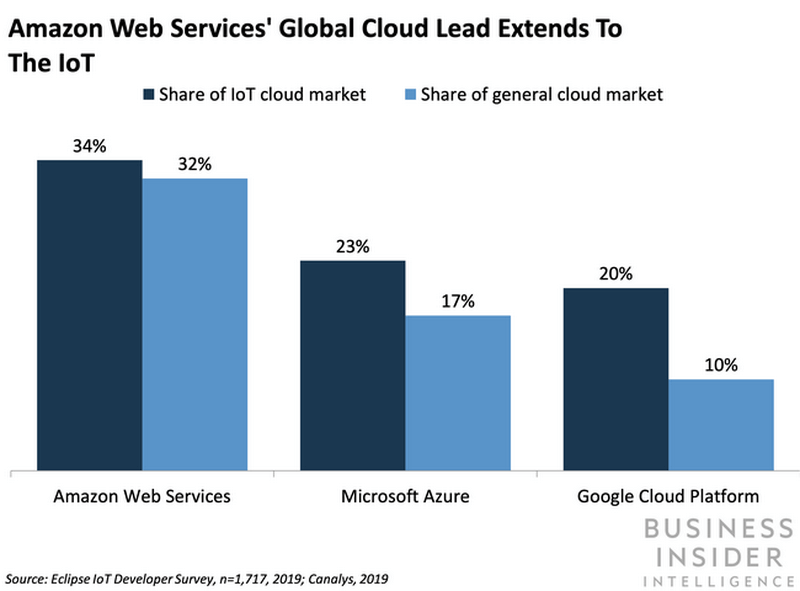
Image credit: businessinsider.com
According to Business Insider Intelligence, Microsoft Azure is the second-biggest cloud platform after AWS, and one of the fastest-growing ones. Azure IoT suite, SaaS solution for building and managing connected ecosystems, showed a 150% growth and added more than 100 features in 2018 only. Since then, Microsoft has been pouring $5 billion into enhancing its IoT and big data services, and it shows.
Azure IoT solutions are versatile and cover every aspect of IoT design and development, from connecting devices to delivering insights to decision-makers. Customers from different industries, including automotive, manufacturing and energy, use this IoT platform to drive efficiency and intelligence to their operations.
Now, let’s have a closer look at the main services of Microsoft Azure IoT platform.
Key Azure IoT Services
Azure IoT Central
Azure IoT Central is the one service you’ll need to connect end devices, both new and existing, to the cloud and build simple and straightforward applications to deliver insights to decision-makers.
This service was designed to be simple. There are several prebuilt templates for popular use cases in various industries (e.g. patient monitoring in healthcare, inventory management in retail, etc.) available to speed up the development.
App platform allows customizing user roles, access and configuration for both security and usability. The device management module enables device monitoring and remote management, including problem detection and remote reconfiguration.
And finally, Azure IoT Central allows you to integrate your IoT application with the existing business infrastructure and other services.
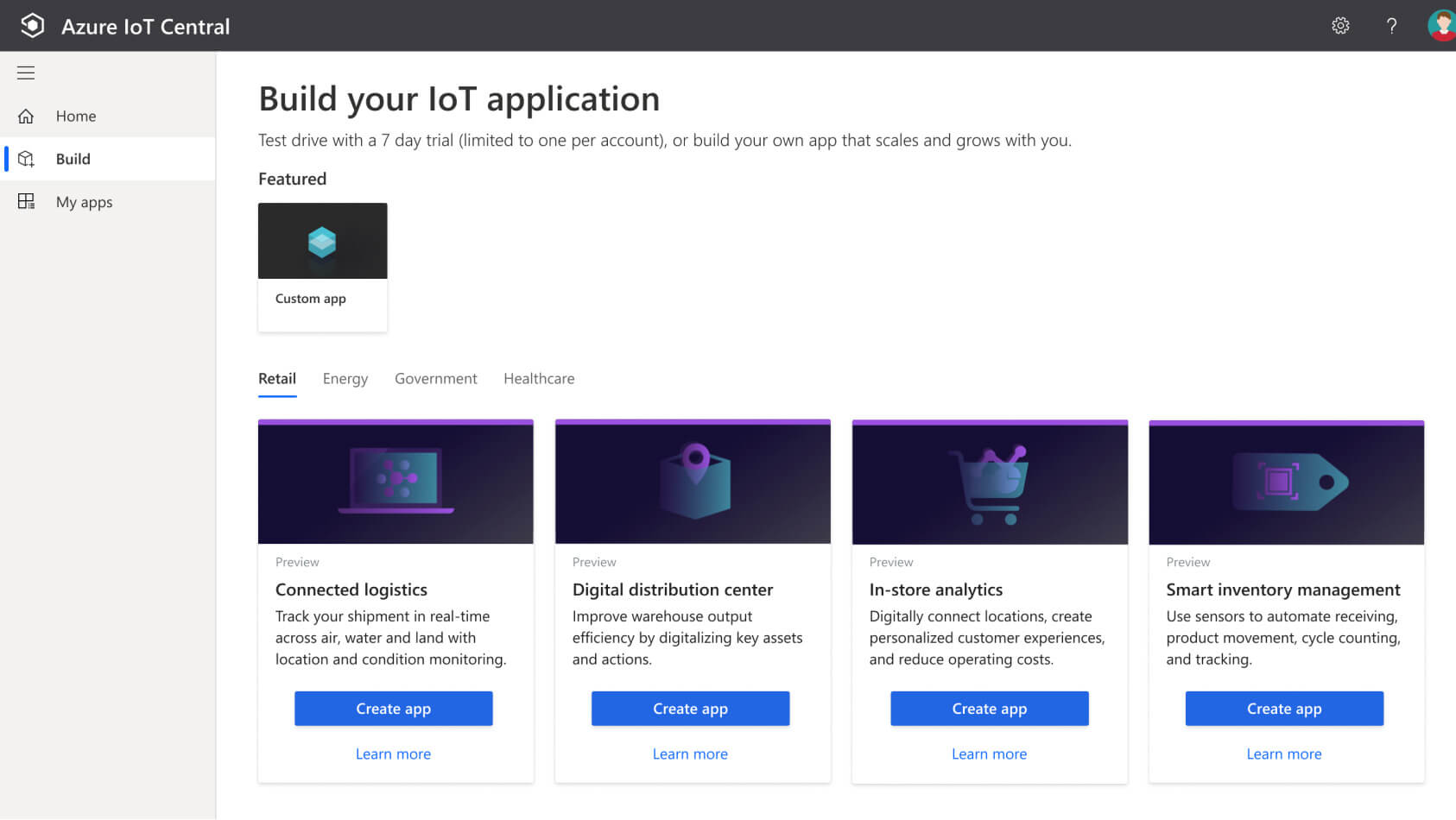
Image credit: azure.microsoft.com
Azure IoT Hub
This is the part of Azure IoT technology that helps you establish a reliable device-cloud-device communication for a fleet of devices (as many as billions).
Using IoT Hub, you can safely channel data both ways. Metrics are sent from devices to the cloud and directed to various services, for example, for storage or processing. At the same time, commands are sent in the opposite direction — from the backend to the designated devices. Read: How to connect Raspberry Pi to AWS IoT
Azure IoT Hub ensures the security and reliability of communication by device registration and authentification, device management tools and message delivery/acknowledgment features. Another valuable feature of this service allows enriching messages with additional information to optimize and speed up their delivery and processing.
To extend the capabilities of an IoT system with edge intelligence, we use Azure IoT Edge. Here’s more about it.
Azure IoT Edge
Following the latest IoT trends, you might want to move some workload to the edge. You may need to offload operations in the cloud, enable offline mode, reduce bandwidth and associated cost, or simply speed up the decision-making process. IoT Edge is Azure IoT devices service that was designed to address all these needs.
This service helps you move a part of data processes, including analytics and applying trained ML models, to edge Windows or Linux devices. Azure IoT Edge supports the most popular programming languages for coding in IoT — C, C#, Python, JavaScript and Java. It also allows provisioning and managing edge devices remotely for better convenience.
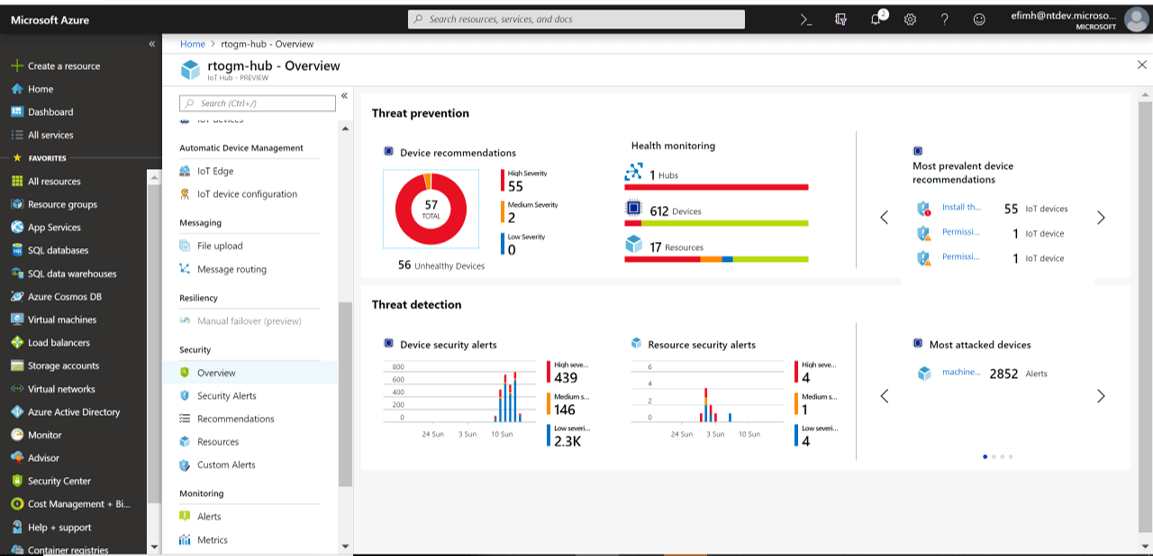
Image credit: azure.microsoft.com
Azure Times Series Insights
Times Series Insights is an all-in-one IoT data analytics, visualization and storage service. It addresses all the requirements for processing IoT events.
First of all, it prepares data and divides it into two categories — warm and cold. Cold data is historical data that mostly takes part in prediction analytics, training machine learning models or other data science processes. Warm data is stored “closer” because it’s frequently used to quickly respond to the events and initiate actions, for example, enable a certain Azure function in IoT device.
Secondly, the service is open for integrations with advanced analytics services (e.g. Azure Machine Learning) and Power BI. And finally, Times Series Insights offers versatile visualizations and allows building custom models to find unique patterns and relationships between datasets.
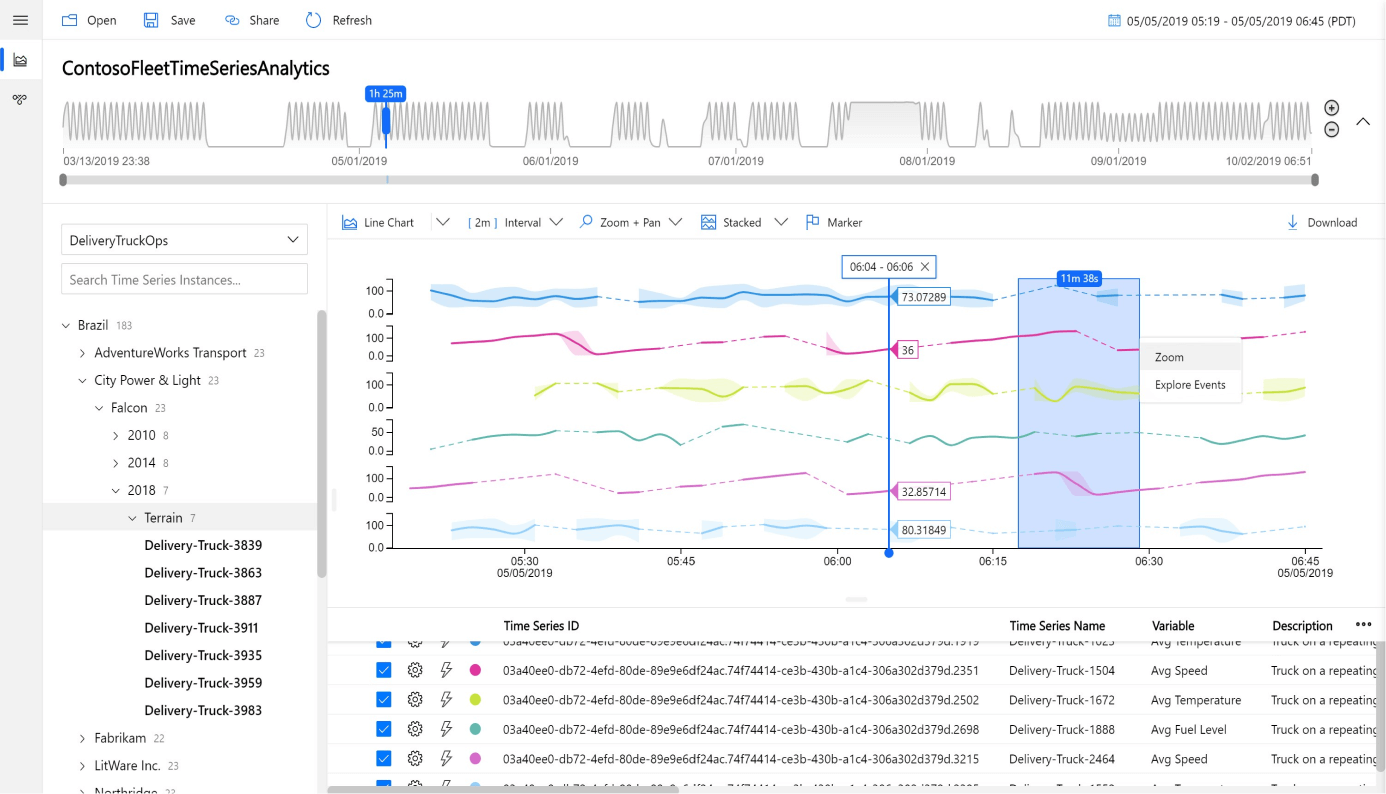
Image credit: azure.microsoft.com
Azure Sphere
Sphere is Azure IoT security service for microcontroller-based devices. It consists of 3 modules: chip, robust Linux-based OS and cloud security service.
This is a multilayered security tool that works both for existing and new IoT systems. Sphere steps in at every part of it — it protects devices, device-to-cloud communication and combats the threats from the outside. On top of that, it comes with over-the-air security updates to maintain its efficiency.
These are the main, but not the only services of Microsoft Azure IoT platform. We’ll mention several other services in the next section about the benefits of Azure IoT.
Azure IoT Benefits
Existing clients point out various Microsoft Azure advantages depending on the specifics of their industries, project requirements and business goals. Here are several benefits of Azure IoT platform that would satisfy if not all but at least many businesses working with IoT systems.
- Simplicity. Microsoft really invested in making its IoT platform convenient and simple for different users regardless of their skills. From plug-and-play device connection and app templates to SDKs that require minimum coding, Azure IoT provides many shortcuts for fast prototyping and deployment.
- Flexible pricing. Each Azure IoT service has its own pricing model, depending on its specifics and feature sets. What really distinguishes Azure IoT pricing is the uncomplicated approach and transparency. For example, the cost of Amazon Sphere combo (chip, OS and security service) may vary depending on different factors, but the price won’t exceed $8.65.
- Cool perks. Each service offers its own perks like prebuilt app templates with popular use cases in Azure IoT Central. Or entirely consists of perks. Azure Maps, for example, helps you enrich your IoT applications with geo and spatial data and include weather intelligence from Accuweather. Azure Digital Twins service allows you to create a virtual representation of your physical IoT environment and determine dependencies, correlations and relationships between its parts.
- Strong security. One of the strongest Azure IoT benefits is the focus on security. Microsoft invests over $1 bn into cybersecurity yearly. Each Azure IoT service has its own means of security, not to mention the whole Azure Sphere service.
- Powerful partner network. Just like AWS, Azure has a growing list of certified IoT partners including IoT hardware manufacturers and solution developers.
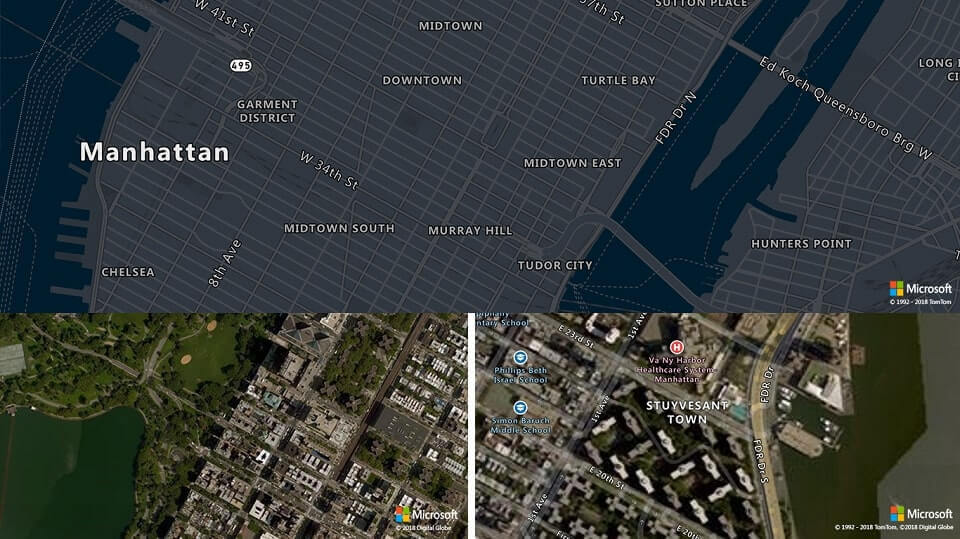
Image credit: azure.microsoft.com
Azure IoT Cases
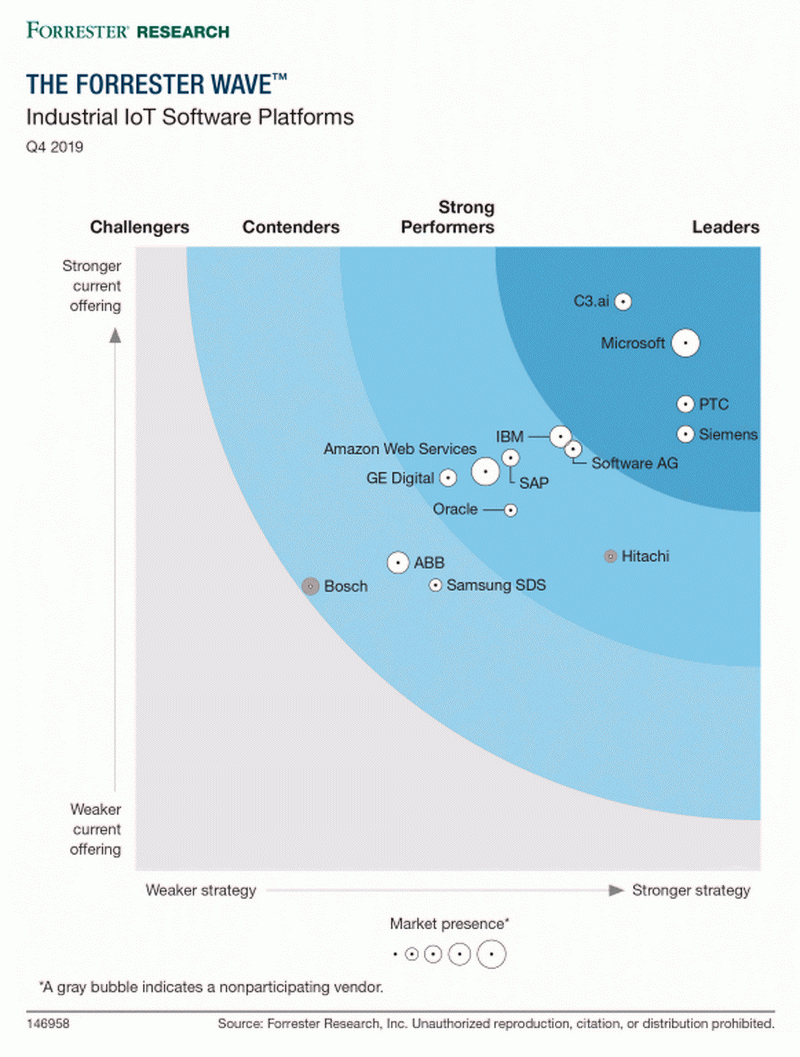
Image credit: go.forrester.com
The Forrester Wave recognized Microsoft among Industrial IoT Software Platforms and gave the company the highest score (5.00) in terms of the partnership, platform strengths and innovation edge. This is another proof why world-renowned companies build IoT using Azure.
The giant in the oil and gas industry, ExxonMobil, has built wells performance monitoring system based on the combination of Azure IoT Edge, IoT Hub, Time Series Insights and several cloud services. It took only a team of 5 and about 12 months to deploy the project from the idea to the operational monitoring system on-site.
Known for myriad stores in all major cities across the world, Starbucks relies on Azure Sphere to secure the fast-growing number of connected systems emerging in its infrastructure.
Ecolab, a global provider of water and energy services, uses a series of Azure services including IoT Hub and IoT solutions accelerators to monitor and control the operations in its water systems across more than 100 countries and optimize the use of resources.
Working with Microsoft Azure at Digiteum
If you are looking for an IoT and cloud service provider and consider Microsoft IoT Azure platform, Digiteum team can assist you every step of the way.
We have been building digital systems using Azure services in different fields including publishing (for Oxford University Press) and agriculture. Check our portfolio and IoT development services to see if our skillset and experience match your requirements. Contact us to talk about your project.




